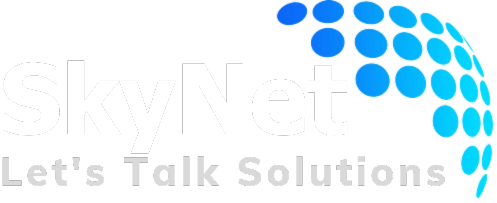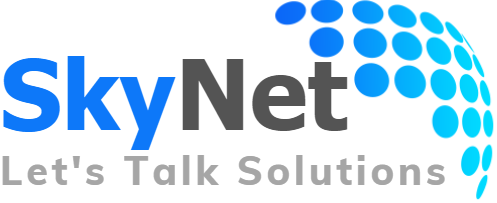Employee productivity is a crucial factor for the success of any business. An effective Human Resource Management System (HRMS) can significantly enhance productivity by streamlining HR processes, improving employee engagement, and providing valuable insights. This article explores how an HRMS can boost employee productivity and drive business success.
1. Streamlined Administrative Tasks
An HRMS automates and simplifies various administrative tasks, freeing up employees to focus on more strategic activities.
- Automated Payroll: Automate payroll calculations, tax deductions, and salary disbursements, reducing errors and saving time.
- Efficient Time and Attendance Tracking: Track employee attendance, leaves, and work hours accurately, ensuring fair compensation and reducing administrative burdens.
- Centralized Data Management: Store all employee information in a centralized database, making it easily accessible for HR staff and managers.
2. Enhanced Employee Self-Service
Employee self-service portals empower employees to manage their HR-related tasks, leading to increased satisfaction and productivity.
- Personal Information Management: Allow employees to update their personal details and contact information, reducing HR workload.
- Leave Requests and Approvals: Enable employees to apply for leaves and track their leave balances through a self-service portal, streamlining the process.
- Access to Payroll Information: Provide employees with access to their payslips and payroll information, reducing queries and administrative tasks.
3. Effective Performance Management
A robust HRMS facilitates comprehensive performance management, helping employees align their goals with organizational objectives.
- Goal Setting and Tracking: Set clear performance goals and track progress through regular reviews and feedback.
- Structured Performance Appraisals: Conduct structured performance appraisals with customizable evaluation criteria and automated reminders.
- Continuous Feedback: Implement a continuous feedback mechanism to keep employees informed about their performance and areas for improvement.
4. Improved Training and Development
An HRMS supports employee development by managing training programs and tracking skill development.
- Training Management: Schedule and manage training sessions, ensuring employees receive the necessary skills and knowledge.
- Skill Tracking: Track employee skills and competencies to identify training needs and opportunities for development.
- E-Learning Integration: Integrate e-learning platforms to provide flexible and accessible training options for employees.
5. Enhanced Communication and Collaboration
Effective communication and collaboration are essential for a productive work environment. An HRMS facilitates better communication across the organization.
- Internal Messaging Systems: Use internal messaging systems to keep employees informed about company updates and policies.
- Collaboration Tools: Provide collaboration tools for team projects, performance reviews, and feedback sessions.
- Feedback Mechanisms: Implement channels for employees to provide feedback and suggestions, promoting a culture of continuous improvement.
6. Data-Driven Decision Making
An HRMS provides valuable insights through data analytics, aiding in strategic decision-making and workforce planning.
- Real-Time Analytics: Access real-time data on key HR metrics such as turnover rates, employee performance, and attendance.
- Customizable Reports: Generate customized reports to analyze trends, identify areas for improvement, and make informed decisions.
- Predictive Analytics: Use predictive analytics to forecast future HR needs, such as hiring requirements and training needs.
7. Better Resource Allocation
An HRMS helps in optimizing resource allocation by ensuring the right people are in the right roles.
- Workforce Planning: Plan workforce requirements based on current and future business needs, ensuring optimal staffing levels.
- Talent Matching: Match employee skills and competencies with job requirements to maximize productivity and job satisfaction.
- Succession Planning: Identify high-potential employees and create succession plans to ensure leadership continuity.
8. Enhanced Employee Engagement
Engaged employees are more productive and committed to their work. An HRMS plays a crucial role in enhancing employee engagement.
- Recognition Programs: Implement recognition programs to reward and motivate employees for their achievements.
- Employee Surveys: Conduct regular employee surveys to gather feedback and understand their needs and concerns.
- Wellness Programs: Promote employee well-being through wellness programs and initiatives that support work-life balance.
9. Compliance and Risk Management
Maintaining compliance with labor laws and regulations is critical for avoiding legal issues and penalties.
- Regulatory Compliance: Ensure compliance with labor laws, tax regulations, and industry-specific requirements through automated updates and reminders.
- Audit Trails: Maintain detailed records of all HR transactions and changes for audit purposes.
- Policy Enforcement: Implement and enforce company policies consistently across the organization.
Conclusion
An HR Management System is a powerful tool for boosting employee productivity by streamlining administrative tasks, enhancing communication, and providing valuable insights. By automating routine processes, facilitating performance management, and supporting employee development, an HRMS enables businesses to create a more efficient and engaged workforce.
At SkyNet Technologies in Kampala, Uganda, we offer state-of-the-art HRMS solutions designed to meet the unique needs of your business. Our systems are tailored to streamline HR processes, enhance employee engagement, and support your organizational goals. Contact us today to learn more about how our HRMS can transform your HR operations and boost employee productivity.




